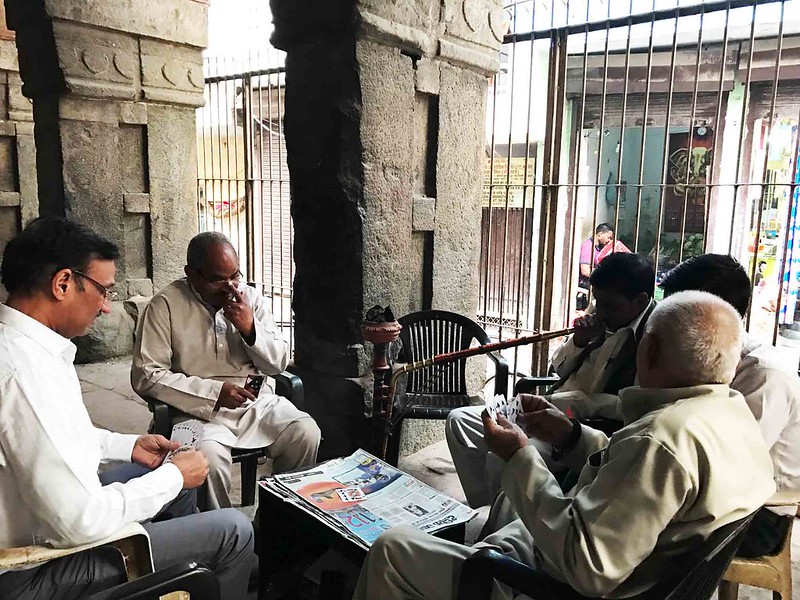
City Monument – Mubarak Shah Sayyid’s Tomb, Kotla Mubarakpur

The elusive memorial.
[Text and photos by Mayank Austen Soofi]
This is true only up to a point. It is late afternoon and The Delhi Walla is walking along the alleys of south Delhi’s Kotla Mubarakpur village for more than half an hour without any sign of Mubarak Shah Sayyid’s tomb, the area’s signature monument that commemorates the 13th century king of Delhi Sultanate.
That old building seems to be only a rumour. The shopkeepers I asked for directions confess to have heard of ‘Mubarak Shah ka Makbara’ but they themselves have never seen it — and they have been here all their lives.
Actually, I’m lucky in not finding the monument. The walk in Kotla Mubarakpur is turning out to be as engaging as a stroll in scenic Lodhi Garden.
This is a self-contained world teeming with roadside barbers, rice merchants, sugarcane juice vendors, and sellers of Hanuman Chalisa booklets. The showrooms of South Extension I market are just five minutes away but they seem to belong to another country. Finally, after crossing a public park, I start climbing a cramped lane, very dark and cool, and suddenly there it is — Mubarak Shah’s elusive mausoleum.
It looks like any obscure Lodhi-era tomb you might spot in the city. But it has far greater ‘local’ atmosphere. On entering, I see four people sitting on chairs in the tomb’s verandah. They are playing cards. An elderly man is smoking a hookah. It could be a scene straight out of any village square in north India except that the backdrop is framed by centuries-old arches and columns of a king’s memorial.
The octagonal tomb is flanked by residential apartments. Some balconies are just an arm away from the dome. Walking around the monument’s corridor is a brilliant way to observe the neighbourhood life that circles it — women are talking to each other in ‘nighties’, young men are glued to their smartphones, and a cat is staring down at two dogs.
The area’s other landmark is Shaad Hair Cutting Saloon.
The central chamber is dark. There are half a dozen tombstones inside. Two dogs are sleeping on the biggest of the graves — probably of the Sultan himself. It is a most surreal view. Just then a woman in a blue salwar kurta walks in barefoot. The dogs wake up and go out quietly. The woman lights an earthen lamp, and bows at each grave with folded hands.
Introducing herself as Meghnawati, she says, “This makbara is of a peer who was a musalmaan… I’m a Hindu but I believe in peer babas.”
She offers me a batasha as prasada and leaves. The chamber becomes empty. The lamp’s flame flickers, casting shadows on the old stone walls. I quickly step out into the more assuring world of the living.
The sultan’s last home
1.
2.
3.
4.
5.
6.
7.
8.
9.










Recent Comments